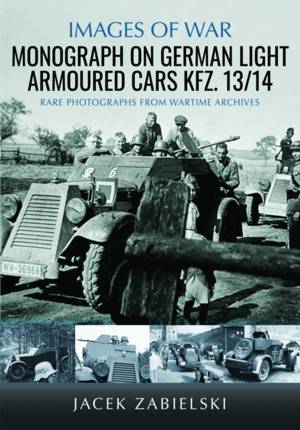
- Afhalen na 1 uur in een winkel met voorraad
- Gratis thuislevering in België vanaf € 30
- Ruim aanbod met 7 miljoen producten
- Afhalen na 1 uur in een winkel met voorraad
- Gratis thuislevering in België vanaf € 30
- Ruim aanbod met 7 miljoen producten
Zoeken
Omschrijving
The Kfz. 13/14 represented a significant step forward for the German army in the realm of armoured scout cars following the devastation of First World War. Initially intended for training purposes, despite their limitations, including inadequate armament, armour, and off-road capabilities, they played a pivotal role in shaping the tactics and strategies of German armoured warfare doctrine. The early scout cars also provided essential training opportunities for crews, helping to develop the skills necessary for operating more advanced armoured vehicles in future conflicts, as well as provided valuable insights into the design of armoured fighting vehicles to the German industry. Despite their contributions to the early development of armoured warfare tactics, Kfz. 13/14 vehicles were already outdated by the outbreak of Second World War and gradually phased out in favour of more modern and capable designs. Nonetheless, their legacy as pioneering platforms in the evolution of armoured reconnaissance vehicles remained significant within the annals of military history. The aim of this book is to tell the lesser-known history of vehicles commonly referred to as "Bathtubs", which despite their unassuming appearance, shaped the generations of German soldiers serving in motorized reconnaissance formations, who after 1939 found themselves at the forefront of armoured formations spreading terror throughout Poland, Low Countries and France.
Specificaties
Betrokkenen
- Auteur(s):
- Uitgeverij:
Inhoud
- Aantal bladzijden:
- 224
- Taal:
- Engels
- Reeks:
Eigenschappen
- Productcode (EAN):
- 9781036139384
- Verschijningsdatum:
- 30/05/2026
- Uitvoering:
- Paperback
- Formaat:
- Trade paperback (VS)
- Afmetingen:
- 171 mm x 248 mm

Alleen bij Standaard Boekhandel
+ 47 punten op je klantenkaart van Standaard Boekhandel
Beoordelingen
We publiceren alleen reviews die voldoen aan de voorwaarden voor reviews. Bekijk onze voorwaarden voor reviews.








